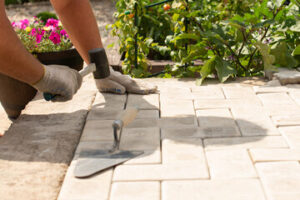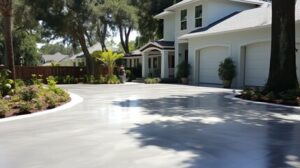Custom Stairs and Railings have become key elements in modern interior design. They combine functionality with artistic expression, transforming spaces into architectural masterpieces. Homeowners and designers seek unique designs to reflect personal style. This trend has led to increased demand for customized solutions.

Design options for custom stairs and railings have expanded significantly. Materials such as wood, metal, and glass offer versatile styling choices. Mixing materials creates striking visual contrasts. Designers use texture and finish to enhance the overall aesthetic.
Floating staircases have gained popularity for their sleek and modern look. These stairs give the illusion of being suspended in mid-air. Hidden supports create a clean, minimalist appearance. The effect adds a sense of openness to any space.
Curved staircases provide a sense of movement and flow. Precision in design and installation is essential to achieve a smooth curve. Railings must match the curve for structural integrity. This design creates a luxurious focal point in a home.
Spiral staircases offer both functionality and style. They maximize space while adding a dynamic architectural element. Custom railings enhance safety and visual appeal. The spiral design creates a dramatic and compact structure.
Custom staircases often incorporate lighting for both function and atmosphere. LED strips under steps or along railings create a soft glow. Lighting highlights the structure’s details and improves visibility. Smart lighting systems allow for mood adjustments.
Materials used in custom stairs and railings influence both style and durability. Hardwood provides warmth and classic appeal. Metal offers a modern and industrial look. Glass adds transparency and reflects light, enhancing the feeling of space.
Handcrafted railings add a personal touch to staircases. Wrought iron designs provide intricate patterns and details. Wood railings can be carved to match specific design motifs. Metal railings can be shaped into modern geometric patterns.
Cable railings have become popular for their minimalist appearance. Stainless steel cables provide strength and flexibility. They create an open feel by maintaining visibility through the staircase. Cable railings work well in both indoor and outdoor settings.
Glass railings create a seamless and elegant look. Tempered glass ensures safety and strength. Frameless glass enhances the feeling of openness. Proper installation ensures stability and compliance with safety standards.
Custom stairs and railings can be designed to complement specific architectural styles. Traditional homes often feature classic wooden balusters and handrails. Modern designs incorporate metal and glass for a streamlined look. Transitional styles blend elements from both for a balanced appearance.
Open riser staircases add a sense of lightness and space. The gaps between steps create an airy effect. Metal or wood treads are often paired with glass or cable railings. Structural integrity ensures the stairs are both safe and visually appealing.
Stair treads and risers can be customized with various textures and finishes. Natural wood grain provides a warm, organic look. Metal treads add a contemporary industrial feel. Textured finishes improve slip resistance and safety.
Mixed material staircases create unique visual interest. Combining wood with metal or glass contrasts texture and color. Designers carefully balance material proportions for harmony. This approach creates a distinctive and cohesive look.
Cantilevered staircases offer a striking modern aesthetic. The steps appear to float with hidden structural support. Metal or glass railings maintain the open, minimalist effect. Precision engineering ensures stability and safety.
Custom staircases often feature integrated storage solutions. Drawers beneath each step maximize space efficiency. Hidden compartments provide functional storage without compromising design. This approach enhances both utility and visual appeal.
Outdoor custom stairs and railings require weather-resistant materials. Metal with protective coatings prevents rust and corrosion. Treated wood resists moisture and insect damage. Proper installation ensures long-term durability.
Custom stairs in commercial spaces must meet strict safety standards. Handrails, tread depth, and step height follow specific guidelines. Non-slip materials enhance safety. Aesthetic design remains important in creating an inviting atmosphere.
Multilevel staircases in large homes require thoughtful planning. Transition points and landings provide rest and support. Matching railings and balusters create design continuity. Proper alignment ensures comfort and ease of use.
Custom staircases often incorporate artistic elements. Carved wood patterns, metal inlays, and custom finishes enhance visual appeal. Artisans add personal touches to reflect homeowner preferences. This approach transforms stairs into functional art.
Invisible support structures create a clean and modern look. Wall-mounted steps with concealed brackets provide the effect of floating stairs. Structural integrity is maintained through advanced engineering. This design enhances modern interiors.
Double staircases create a grand entrance in large homes. Symmetry in design enhances the visual impact. Matching railings and finishes create cohesion. Wide steps and landings provide comfort and balance.
Custom stairs can be designed with eco-friendly materials. Reclaimed wood and recycled metal reduce environmental impact. Low-VOC finishes improve indoor air quality. Sustainable practices enhance both aesthetics and environmental responsibility.
Modular staircases offer flexibility in design and installation. Pre-engineered components simplify the process. Custom finishes and railings provide unique details. Modular systems combine convenience with design freedom.
Custom staircases can include built-in seating or shelving. Wide landings double as reading nooks or display areas. Stair-side shelving maximizes storage without taking up floor space. Integrated features increase functionality.
Structural glass staircases create a bold contemporary statement. Thick tempered glass ensures strength and safety. Metal or wood accents provide contrast and support. Proper treatment prevents scratches and clouding over time.
Curved railings require precise fabrication and installation. Metal railings are shaped through heating and bending. Wood railings are carved and sanded to match the curve. Seamless installation ensures smooth lines and visual continuity.
Custom staircases for loft spaces maximize vertical efficiency. Compact designs include spiral or alternating tread stairs. Metal and wood finishes reflect the loft’s modern character. Space-saving solutions maintain comfort and safety.
Rustic staircases feature natural wood and organic textures. Exposed wood grain and knots add character. Hand-forged metal railings provide a vintage touch. Natural finishes highlight the beauty of raw materials.
Custom railings with decorative inlays add artistic flair. Metal or wood inlays create unique patterns and textures. Handcrafted designs reflect personal style. Decorative elements elevate the staircase’s visual impact.
Adaptive staircases cater to mobility and accessibility needs. Lower step heights and wider treads improve ease of use. Handrails are positioned for comfort and support. Custom solutions ensure both safety and style.
Custom stairs for modern minimalist interiors feature clean lines and simple materials. Unadorned wood or metal steps emphasize simplicity. Glass or cable railings maintain a streamlined look. Precision engineering ensures structural integrity.
Architectural staircases serve as focal points in open-concept spaces. Floating designs and bold materials draw attention. Artistic railings enhance the staircase’s sculptural quality. Proper placement enhances visual balance within the space.
Custom stairs and railings allow for personalized expression. Homeowners collaborate with designers to reflect their taste and lifestyle. Materials, shapes, and finishes create unique combinations. This approach transforms functional elements into design statements.
Multi-functional staircases combine design with utility. Integrated bookshelves, lighting, and storage increase functionality. Design details maintain aesthetic appeal. Blending form and function enhances overall home design.
Custom stairs in vacation homes reflect a relaxed, natural style. Wide treads and open risers enhance light flow. Railings made of wood or metal reflect the surrounding environment. Proper design ensures comfort and visual harmony.
Custom stairs in high-traffic areas require durable finishes and materials. Metal or treated wood resists wear and tear. Non-slip surfaces enhance safety. Professional installation ensures long-term performance.
Custom stairs and railings reflect evolving design trends. Homeowners seek innovative solutions that combine function and style. Creative use of materials and shapes results in unique designs. Proper engineering ensures lasting beauty and strength.



